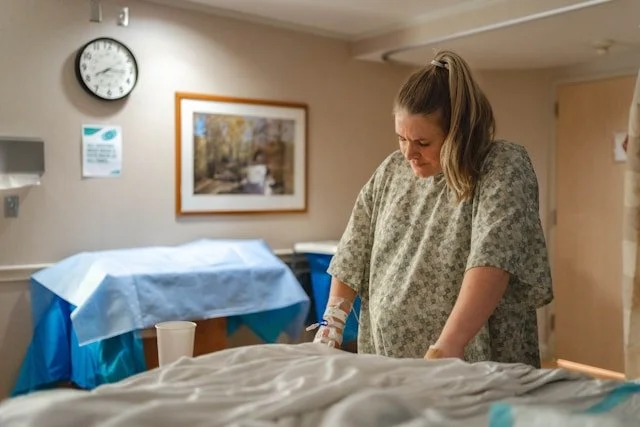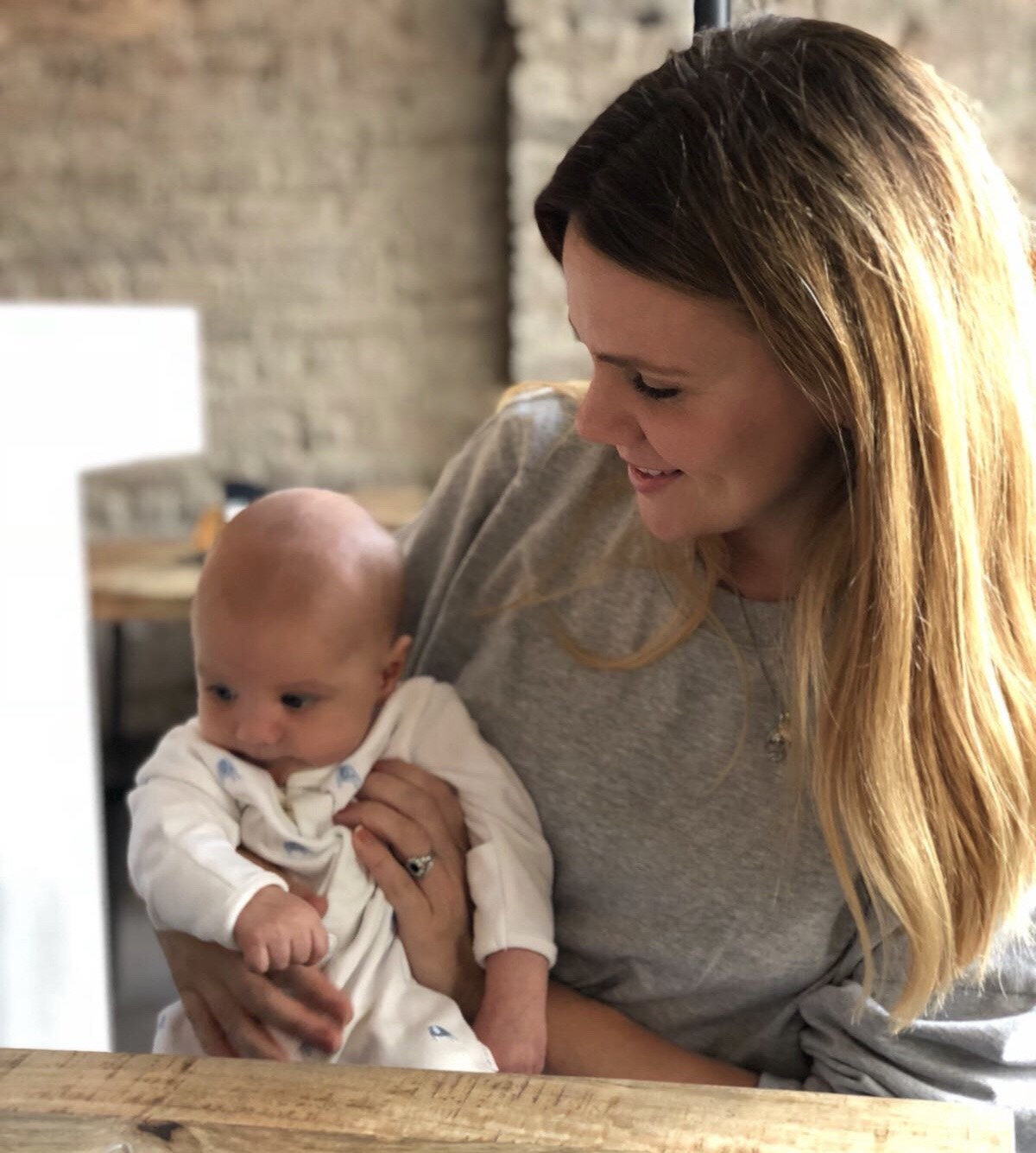Home birth was something that never initially appealed to me. Going to hospital to have a baby was just what you do, it’s what everyone I knew did.
I’ve been a nanny for over ten years, and in the early days I worked for a lot of new mums with young babies, and they always had traumatic birth stories.
Induction, emergency sections, forceps, ventouse, episiotomy. The list was endless. The injuries scary.
Most of them hired me to look after their newborns while they had some sort of therapy to repair whatever damage they had sustained during the birth.
I met Rebecca as she needed a babysitter and she had a three week old boy. I asked her how her birth went as I usually did when I met a new mother , and she replied “ah it was lovely, I had him here at home with a private midwife” and that was my first introduction into a whole new world. One that wasn’t full of fear and threats and panic. It was all just as it should be.
Everything changed for me in that moment of positivity about birth. It didn’t have to to be bad. Maybe everyone thought you just go to hospital and it was what you do. But is it what you should do? Was it the best option for a healthy pregnancy?
It would be nearly ten years later I was pregnant with my own son. But I held what Rebecca had said and I read and researched. The more I read and the more I researched the more committed I became. It all made so much sense.
I had all my scans at St George’s hospital and at one point they found my baby had a small heart murmur. The specialist there said it was perfectly fine and not to change my birth plan of having the baby at home as they were confident it was no problem.
However the home birth team at Kings College hospital rang me when I told them about the heart murmur and they decided they did not want to support my home birth. I was terribly upset. I felt let down and left all alone. They cancelled all my antenatal appointments and I felt they were trying to force me into something I knew was not right for me. Eventually they said that I could ignore medical advice and sign all these disclaimers, and they would “let me” have a homebirth- but I told them no. In my eyes they were now compromised.
They didn’t agree with my decision, they were not supportive and they would have no doubt tried to transfer me into hospital as soon as anything wasn’t “textbook”. And that was not what I wanted.
That is when I found Claire my independent midwife. She talked about all the things I believed in, Ina May gaskin - who is an amazing midwife. Hypnobirthing (which I had done a course and read books on). She understood what I was trying to achieve.
We clicked and I felt safe. In my birth it was important to me to feel safe. To know that people would listen to me. To not try and force me to do anything I didn’t want to do. Respect is what I wanted. Respect shown to me as the women in labour and the women who was feeling all these pains and movement. Respect what I wanted.
I wanted calm. Peace. Low lights. No talking. No rushing. All these things are what I craved from my labour and birth.
And they are exactly what I got. My waters broke naturally at 10:30pm Wednesday evening, so my husband and I prepared the house together. We put the pool up, laid out cushions for me a kneel on if I wanted to. We got the music ready and put candles out.
I started getting contractions a few hours later. I called Claire at around 4am, and at that moment the peace I felt knowing I wouldn’t have to leave my home and arrive anywhere and meet strangers was just amazing.
I turned a low light on, the tv on, and laboured in peace on my own with my tens machine, while my husband slept and I waited for Claire.
I laboured for quite a few hours but it was something I could cope with because I felt safe and calm and my mind was strong because I felt no fear or panic. I just felt tired because it is hard physical work.
I used the pool as pain relief in the end rather than for the birth as it slowed down my contractions, but that was something that was very helpful at the time. Gave me a break. And Claire followed my lead. She let me be in charge of where I wanted to go, how I wanted to lay or stand or kneel. She just suggested things to me that may help. And she made sure I was fed and hydrated so I had energy.
I got upset with some of the really intense contractions and I cried but she calmed me and told me how strong I was and rubbed my back. Encouragement I really needed. I had such great care as it was just her and I and my husband. Real one to one.
I went from room to room in my flat for the change of scene. I watched tv, I had music and candles. I sat in the bathroom and yelled when I needed to. I opened the windows as I wanted the cool air. There were no restrictions on me.
My midwife doesn’t believe in checking for dilation ( and neither do I) so i was never checked during my labour because she says it actually tells you nothing. But I did check myself at one point. I was about 15 hours in and my cervix was 100% closed. Absolutely no dilation. Im sure if i was in hospital this would have caused a huge issue. However being at home with my independent midwife I just carried on regardless. After I had been in the birth pool I got out and checked myself again and I could feel I was suddenly open, and three hours later the baby was born, so numbers mean nothing.`
Birth is no easy road. But you can make it more comfortable. You can make it so you can cope.
My second stage was prolonged. Something I actually wasn’t really aware of at the time. I just tried to listen to her when she was helping me understand how to push.
With your first baby your body has never done this before so you might need some coaching like I did. And you need the right person to help you.
Claire was patient, she explained calmly where exactly I needed to push down into when she realised I didn’t quite understand what I should do. She asked my permission anytime she touched me which made me feel respected. We didn’t do any examinations as I wasn’t keen on them (and neither is she) and they hadn’t been necessary, but I wanted her to show me where to push down into. It was difficult work, I was tired, but at no point did I think I couldn’t do it. Because I felt calm.
I just needed time because this was new to my body.
This unfortunately is not what many women who give birth in hospital are offered. They are rushed and panicked. Which results in all the things I mentioned at the start.
I was given time and space and reassurance in the calm comfortable environment of my home. No strangers. No pairs of eyes. Just us in low light, and I felt safe.
The baby was doing well, Claire was checking on him. She explained I needed to give it everything I had, as although the baby was happy and his heart rate was good, he had been in my pelvis a long time and it would be good if he was to come out soon.
She explained I would need to get him out very soon as every time I pushed he came forward but was then slipping back, and I needed to get four pushes in a row rather then the three I had been managing, or we may have to transfer into hospital for some help to get him out.
She never panicked me. I knew I could do it and I felt calm and collected. She just gave me guidance and after some hard work from me with those four pushes in a row a few times- which really took some inner strength I have to say, he was born. Smoothly and not long after we had that discussion. And it was really a discussion, I was clear headed, she was giving me my options and it was my decision what to do. I felt confident to stay at home as the baby was doing well and I felt totally fine physically and mentally and knew I could do it. I just needed a bit more time. I was so close.










